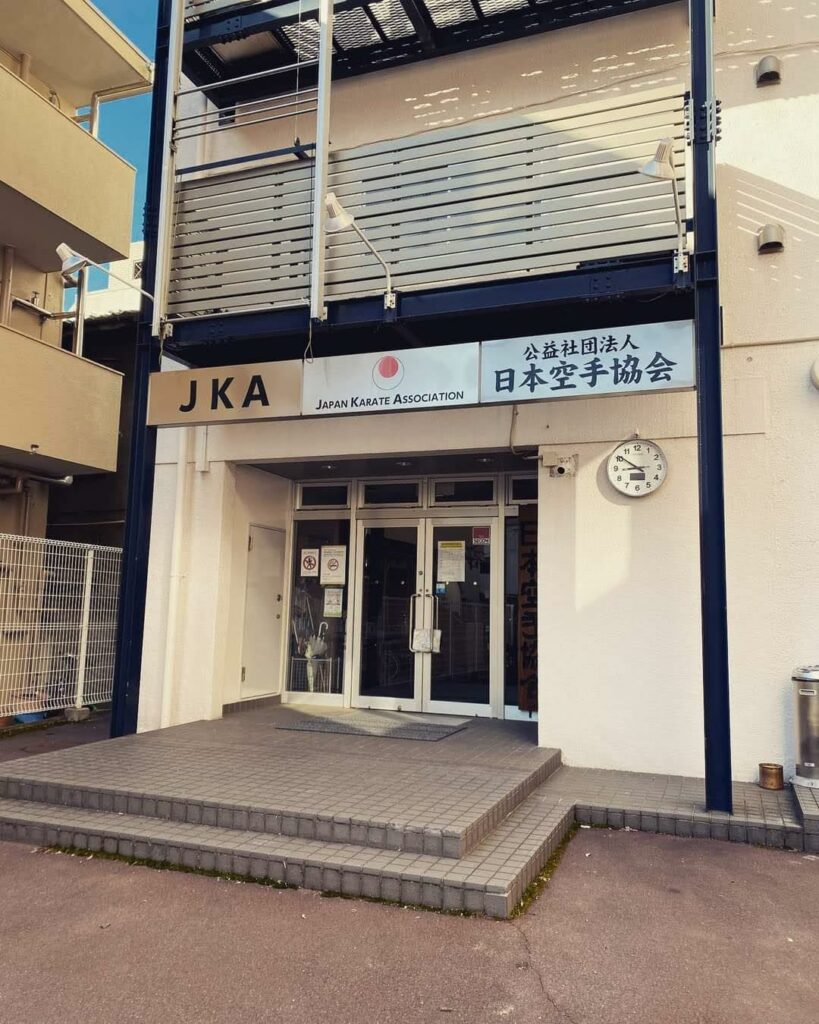
Training at JKA Headquarters, Tokyo
https://youtu.be/11UF8IzW7hI?si=UQxpfXf8ggzQaUBh
Originating directly from Gichin Funakoshi Sensei, JKA Karate is deeply rooted in traditional Okinawan Karate teachings. It is characterised by a distinct dynamic style of power, speed, stability, and fluidity, solidifying JKA’s reputation as a pinnacle of karate excellence.
JKA Karate is designed to be effective and accessible to everyone, regardless of age or skill level. It achieves this by using scientific and physiological principles of technique for power generation; and with dedicated practice allows for effective self-defense without needing to rely on physical stature.
With an unwavering commitment to technical precision and personal development, it is unique in its strong emphasis for mastering fundamental techniques through disciplined practice.
In addition to technical proficiency, JKA also places strong emphasis on character development, etiquette, and the application of Karate principles in daily life; and despite its competitive success, remains strongly committed to preserving the traditional values and spirit of Karate-Do.
SHURI TE, TOMARI TE, NAHA TE - THE ORIGINS
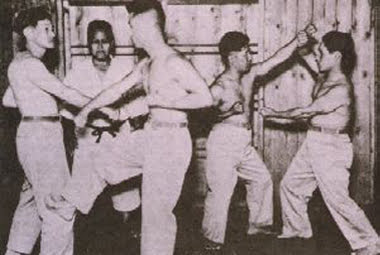
Photo courtesy of https://ageshiojapan.com/jp/okinawa_karate/okinawan-karate-history
Shuri-te, Naha-te, and Tomari-te are the three major traditional styles of Okinawan karate, each with unique characteristics.
Shuri-te originated in the city of Shuri, known for its emphasis on speed, agility, and fluid movements. It incorporates dynamic stances, rapid strikes, and evasive footwork, making it well-suited for fast-paced combat situations.
Naha-te, originating in the city of Naha, focuses on close-range combat, grappling techniques, and strong stances. It emphasizes deep stances and internal power, making it effective for self-defense in close-quarters situations.
Tomari-te developed in the port town of Tomari and shares similarities with both Shuri-te and Naha-te. It emphasizes a balance between power and agility, incorporating elements of both styles, along with its own unique techniques.
JKA is primarily associated with the Shuri-te lineage of Okinawan karate, which is evident from its emphasis on speed, agility, and fluid movements. However, JKA also incorporates elements from other traditional Okinawan styles, such as Naha-te and Tomari-te, as well as influences from other Japanese martial arts. This is why Kata Enpi characterised by its fast, agile movements and big low stances contrasts sharply with Kata Hangetsu in which Naha Te influences can be seen clearly and why Katas such as Jitte and Bassai Sho are based on concepts of use of the Bo (stick).
JKA HEADQUARTERS INSTRUCTORS
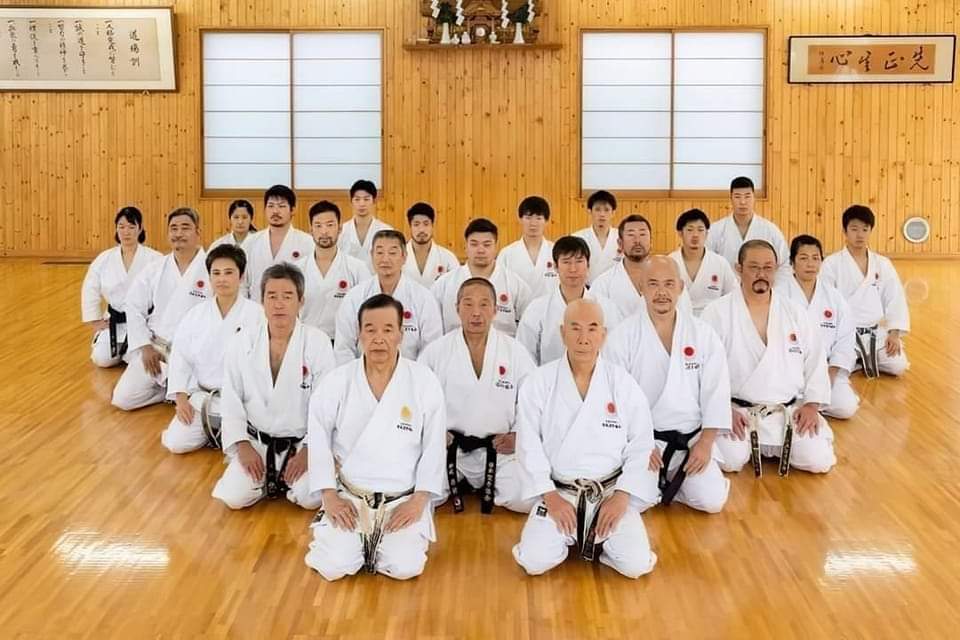
Photo courtesy of https://www.facebook.com/profile.php?id=100054657960341
The Instructors at JKA headquarters are dedicated full-time professionals who continuously research scientific concepts and integrate principles from biomechanics, physics, and physiology, to ensure that techniques are efficient and effective for practitioners of all ages and skill levels.
All JKA HQ instructors train together every day during the week in an exclusive instructors’ class, pursue personal research in training methodologies and regularly travel abroad for teaching and examination purposes.
Their commitment to ongoing research and refinement ensures that JKA Karate remains at the forefront of martial arts instruction, providing practitioners with the most effective and scientific training methods available.
In the JKA, unique to any other organization, there exists a specialized Instructor Training Program demanding strict standards of excellence. On passing an entry examination, selected candidates enter a two-year course of hard training and are also required to submit monthly research papers on specific subjects. Upon successfully completing the demanding program, they ascend to full-time professional instructor status.
This distinguishes JKA as an educational institution that continues to generate new instructors throughout its hierarchy; ensuring continuity and reliability of standardised high quality instruction without relying solely on the leadership of one or a few individuals.
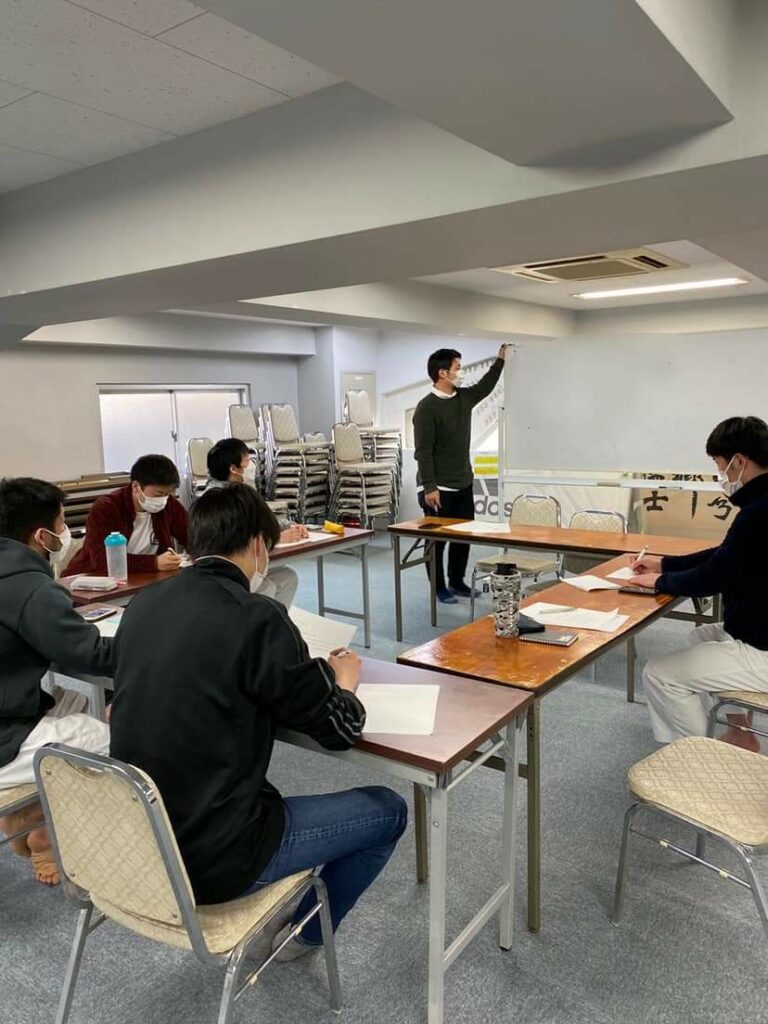
Photo courtesy of https://www.facebook.com/news.jka
UNIQUE FEATURES OF JKA TRAINING
In JKA Karate, every technique is grounded in solid, scientific principles of physical movement theory, underscoring the organization’s commitment to excellence. This is most evident in the meticulous practice of Kihon, the foundational techniques, where Budo body mechanics receive considerable attention since they infuence performance and deeper understanding of Kata and Kumite.
Generation of power extends beyond muscular strength; it requires correct practice of form, angle and shortest linear course of technique, the balance between flexors and extensors, harnessing energy from the ground up through the feet and projecting it forward using sharp hip movements “koshi wo kiru”, instantaneous whole body contraction and relaxation, fast joint rotation at the end of technique and a complex understanding of the body’s energy points, guiding practitioners to derive power effectively.
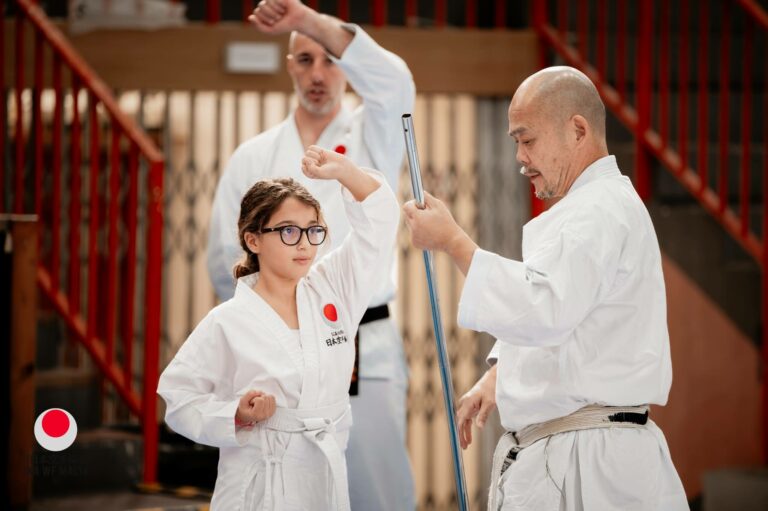
JKA Karate is unique also in its ability to develop the person as a whole through 3 interrelated elements linking the physical body to one’s heart and soul.
1. “Shisei” literally translates in English to ‘posture’, however in Japanese language it has a deeper meaning than just physical posture. It is a posture showing a person’s energy and the feeling of one’s heart and soul. This is evident when natural stance is adopted with confident mental attitude, correct mindset, manner, awareness and readiness.
2. “Kokyuu” which means breathing, does not only refer to inhaling and exhaling. Through focused breathing techniques, practitioners can develop a harmonious connection between their physical bodies, mental focus (spirit), emotional center (heart), and inner self (soul). For example during Rei, correct bowing is done through correct breathing in 3 steps called ‘Rei San Soku’, and with all of one’s heart and sincerity. Which links back to the concept of “Shisei” as breathing gives deeper meaning to posture.
3. “Juushin Idou” which refers to the smooth shifting of centre of gravity, “where the ‘heart’ feels heaviest”, on the heels.
All these principles empower practitioners of all ages and abilities to have the ability to execute techniques with precision and effectiveness, solidifying JKA’s science and continual improvement.
“The fundamental techniques have been developed and perfected through long years of study and practice, but to make any effective use of these techniques, the spiritual aspect of this art of self-defense must be recognised and must play the predominant role. Training means training of body and spirit, and above all else, one should treat his opponent courteously and with proper etiquette. It is not enough to fight with all one’s power; the real objective in karate-do is to do so for the sake of justice.” Best Karate, Kumite 1, M. Nakayama
KIHON
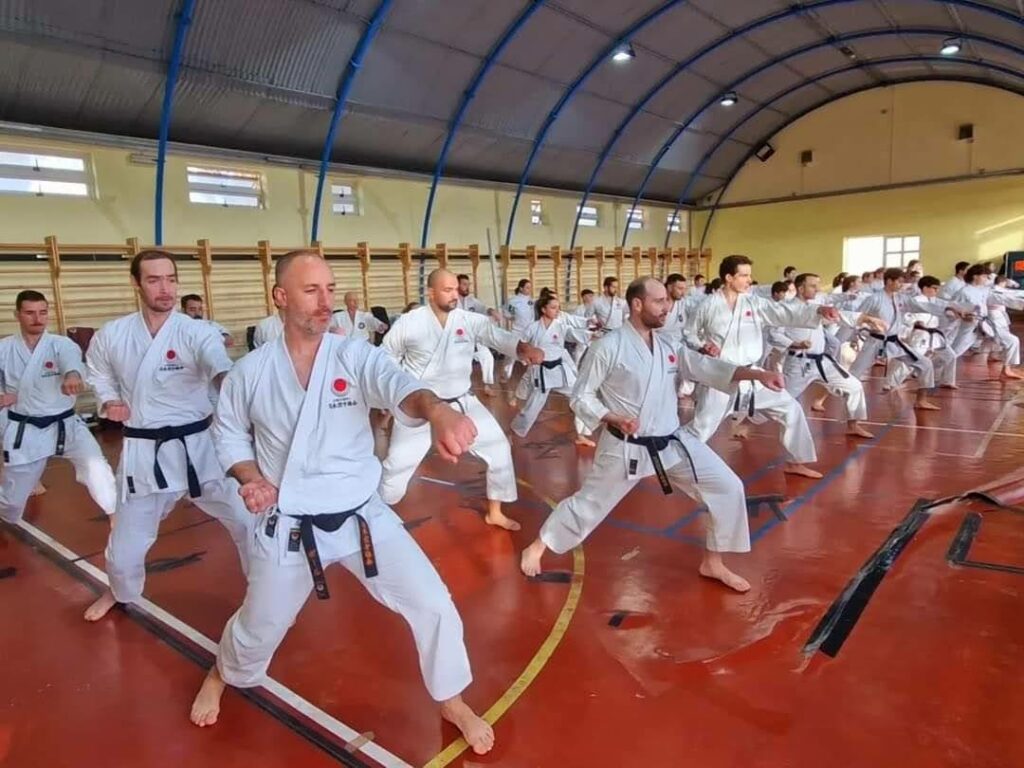
The Importance of Kihon in JKA Karate
Consistent repetitive practice of Kihon (basic techniques), form the foundations of JKA Karate, acknowledging that becoming proficient in even a single technique demands lifelong commitment. Through repetitive drills of stances, blocks, punches, kicks, and strikes, practitioners develop muscle memory, precision, posture, body alignment, and control, laying the groundwork for advanced techniques.
A key aspect of JKA training is its focus on the lower body legwork, aiming to develop strong legs, speed and dynamic footwork. This focus is evident in the use of long, deep stances and movements, recognizing that genuine power stems from the lower body “kahanshin” rather than solely relying on upper body strength. Through years of diligent training, practitioners learn to generate effective power from the ground up for every technique, refining this skill through consistent practice.
https://youtu.be/bBhxxRsq-1A?si=G6LOvL05UDfo4t6p
In Japanese culture, the learning process involves observation, imitation, and repeating movements until a breakthrough moment is reached. This hands-on approach, prioritizing constant repetition over detailed verbal explanations, is considered more effective for physical learning. It aligns with the JKA’s philosophy of honing techniques through persistent practice and personal exploration. It is hard to get the correct feeling of a technique until you try, then you will understand.
KATA
The Role of Kata in JKA Karate
“The kata of karate-do are logical arrangements of blocking, punching, striking and kicking techniques in set sequences”. Best Karate, M. Nakayama
Kata, originating from the time of Gichin Funakoshi, were initially created to be practiced as self-defense applications. This was especially important during times of war when weaponry or fighting practice was banned. They served as a means for individuals to train and prepare for self-defense situations, preserving martial arts knowledge and techniques despite restrictions on combat training.
Later, when Karate was introduced into Japan’s educational system, Kata were altered to enable practice by children at schools, since they contained concealed attacks and strikes. Funakoshi Sensei’s intention was to ensure that children did not engage in potentially dangerous techniques.
Kata can be categorized into two main groups. The first group focuses on physical development, emphasizing muscle and bone strengthening. Though seemingly straightforward, when performed correctly, these kata exude strength and dignity. The second group of kata aims to enhance fast reflexes and rapid movement. Regardless of the type, all kata promote coordination and integrate the mind and body with spirit, one’s heart and soul.
During Kata, practitioners are expected to demonstrate humility, gentleness, confidence, decorum and a relaxed demeanor while also maintaining fighting spirit – “Zanshin” – the frame of mind in which one’s body and mind are prepared for any eventuality.
As Gichin Funakoshi Sensei often reminded his students, “the spirit of karate-do is lost without courtesy”, Best Karate, 11, M. Nakayama, which is why all Kata begin and end with Rei.

Kata practice extends over a lifetime, evolving much like calligraphy, as described by Izumiya Sensei, 8th Dan JKA HQ Instructor during his visit to Malta in 2023. Initially, learners grasp the basic form, akin to understanding the strokes of a kanji character. However, with years of repetition and advancement through belt levels, the same Kata transform into expressions of greater beauty and depth, retaining their essence while acquiring new layers of meaning.
Each kata possesses its own rhythmic flow, known as “kankyuu” in Japanese, akin to a musical composition. Within the movements of kata lie numerous self-defense applications, each holding their own purpose, encouraging practitioners to imagine themselves surrounded by multiple opponents, ready to execute blocks and attacks in all directions.
The Japan Karate Association (JKA) recognizes a standard set of 25 Katas that are commonly practiced within its curriculum.
- Shitei Kata: Heian Shodan, Heian Nidan, Heian Sandan, Heian Yondan, Heian Godan, Tekki Shodan
- Sentei Kata: Bassai Dai, Enpi, Jion, Kanku Dai, Hangetsu
- Advanced Kata: Tekki Sandan, Tekki Nidan, Bassai Sho, Kanku Sho, Jitte, Unsu, Meikyo, Nijushiho, Gankaku, Sochin, Chinte, Wankan, Gojushiho Sho, Gojushiho Dai
These katas range from basic to advanced levels and cover various aspects of karate techniques, stances, movements, and principles, thus serving as a structured means of training and development for practitioners.
Beginners typically start with the Heian kata, which serve as foundational forms leading to more advanced kata. Even for black belts, the Heian kata demand a lifetime of study due to the intricate detail within simplicity. Every revisit to these kata unveils new insights and challenges, underscoring the profound depth and importance of kata practice in JKA Karate.
Ultimately, with years of dedicated practice, one aspires to demonstrate the 6 essential elements of Kata consistently during every performance. These are:
- Chikara no kyoujaku – a contrasting display of power and weakness in technique
- Karada/Tai no shinshuku – contraction and expansion of the body
- Waza no kankyuu – contrast of speed in rhythm, some techniques having slow timing while others are very quick
- Juushin no antei – a solid understanding of stability of the centre of gravity
- Kishin no yoi– preparation of spirit, one’s inner feeling not just of the body
- Chaku Gan – the meaningful focus of the eyes
KUMITE
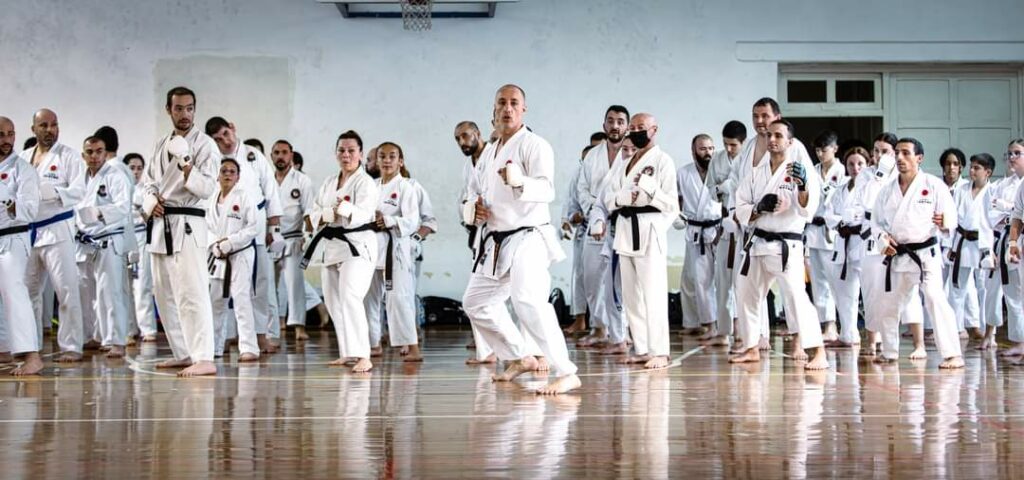
Types of Kumite in JKA
“The ultimate purpose of training is to have the body perfectly habituated to the basic techniques. Then in actual combat, accurate techniques and movements are possible without conscious effort.” Best Karate, Kumite 2, M. Nakayama
In the Japan Karate Association (JKA), Kumite serves as the practical application of techniques learned in Kata. Improvement in Kumite is inseparable from improvement in Kata; one cannot progress without the other.
Various types of Kumite are practiced, each serving specific training purposes.
- Gohon Kumite (5 step) and Sanbon Kumite (3step) are designed to solidify proficiency in basic attack and defense techniques, as well as to hone fundamental leg movements (unsoku). As practitioners advance, the focus shifts to mastering more complex movement scenarios, including charging in with swift changes in rhythm.
- Kihon Ippon Kumite (1 step) emphasizes the acquisition of powerful counters using basic techniques, while also teaching practitioners to gauge distance (maai) and breathing (kokyuu) for perfectly timed attacks and defenses. It is about developing the instinct to counterattack decisively and appropriately in split-second moments.
- Jiyu Ippon Kumite acts as a transitional stage to Jiyu free kumite, where practitioners learn to use distance to their advantage and master various techniques, including leg movements and tai sabaki. It is about learning to seize opportunities effectively, as though they may only occur once.
In Jiyu Kumite, practitioners focus on exploiting the constantly changing maai (a form of distancing) to lead opponents into disadvantageous positions. This involves practicing changing and continuous techniques, developing the ability to evaluate situations and recognising readiness or unpreparedness; all while maintaining outward calmness and concealing true intentions.
Similar to Kendo, there are the 4 principles that emphasize the relative importance of the different components in all types of Kumite. As explained by Okuma Sensei, 7th Dan JKA HQ Instructor:
一眼 二足 三胆 四力
“Ichi Gan”, “Ni soku”, “San Tan”, “Shi Ryoku”
- Firstly, the eyes, to see and perceive what an opponent is doing
- Secondly, the feet, not only do feet move the body through space but also any strike is powered by the lower limbs and back through footwork
- Thirdly, courage, which empowers one to execute a move/strike against an opponent regardless of how strong he/she may be
- Fourthly, strength, to hit an opponent sharply and firmly with the minimum required strength
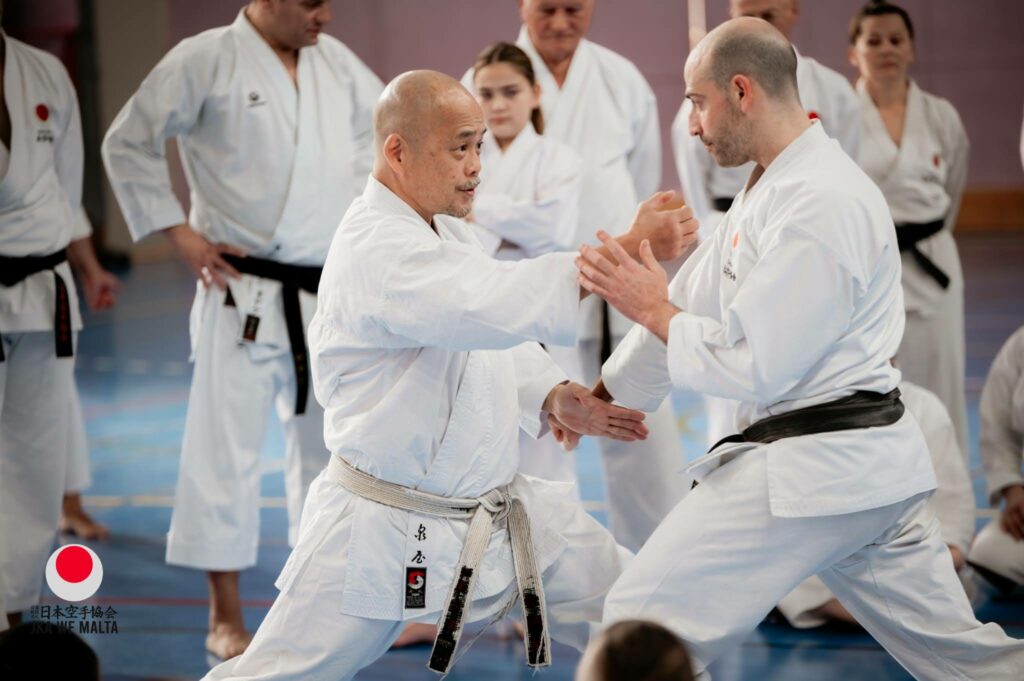
Mental readiness, courage, Kamae (posture of readiness), the use of the eyes, studying maai (distancing), making the most of chance, understanding and disrupting an opponent’s rhythm, attacking with acceleration, strength, and swiftness, these are all complex objectives that can only be attained slowly and progressively through years of training and experience.
Ultimately the objective of training is to cultivate a “sixth sense” for attack and defense. This is not possible unless training is incessant.
KIME
In JKA Karate, the foundation lies in placing equal emphasis on Kihon (basic techniques), Kata (forms), and Kumite (sparring), which are inseparable and essential for progress. Through this integrated approach, advanced practitioners achieve Kime, “the pinnacle of karate”, where body and mind harmonize to deliver a decisive attack – “using an appropriate technique, with maximum power, in the shortest time possible”. This epitomises the ultimate purpose of the “kihon-kata-kumite trinity”.
The sudden and explosive contraction of muscles at the point of impact results in maximum power and effectiveness in a moment of total focus and commitment to technique. Yet, in training practice with an opponent, one learns not only how to generate kime but also how to control it perfectly.
“not carrying a technique through to kime is not true karate. So the question is how to reconcile the contradiction between kime and sun-dome. The answer is this: establish the target slightly in front of the opponent’s vital point. It can then be hit in a controlled way with maximum power,” without causing injury – Best karate, Kumite 1, M. Nakayama
Achieving “Kime” requires not only power and technical training but also proper preparation; maintaining correct posture, correct use of breathing, distance, technique trajectory, seizing opportunities in unpreparedness situations and above all control. Consequently, this is why kime, above all other things, is difficult to master.
As explained in an interview with Naka Sensei, 7th Dan JKA HQ Instructor in “This is ‘Kime’ of BUDO Karate” Tatsuya Naka Interview 2020
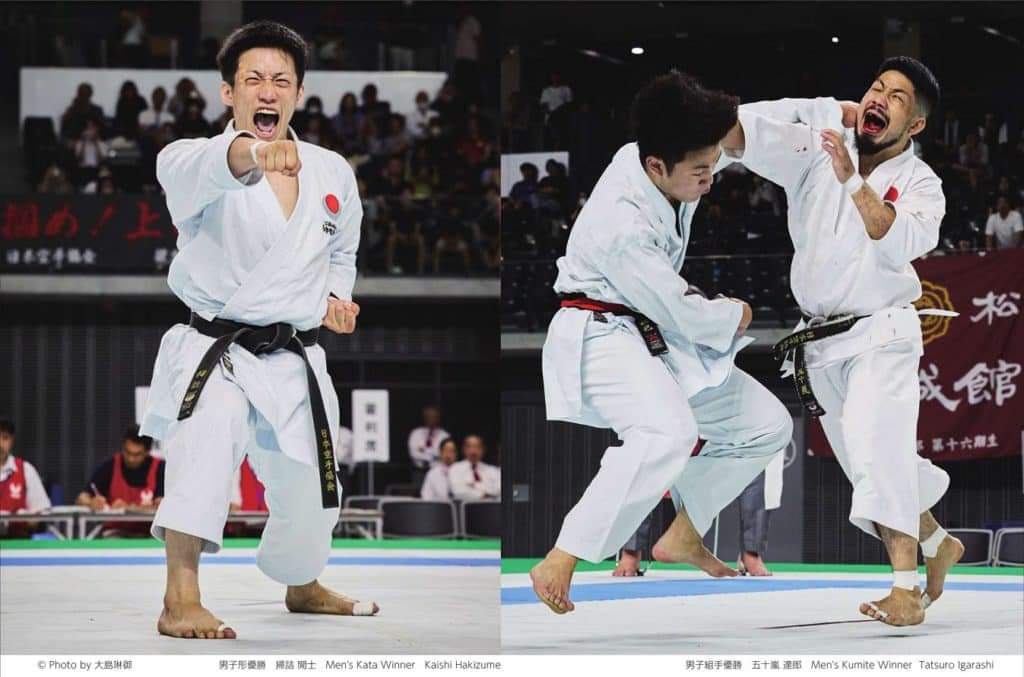
[Excerpt of a kind translation by ‘Yukiko Kikuchi’]
“ **When my hand is stretched out completely when i just about reach the target, I cannot load power on the technique. So at JKA this will not score. Now, if my technique was executed with full power but yielding a tiny space to his face, then this will be counted as a half point (waz-ari) or ippon (full point). By just stretching a bit more, I would be knocking him down.**
KIME: A technique loaded with power, excellent technique, highly polished technique… the point of discussion is how to utilize them, in the most efficient way. First objective will be developing the power, and the next one will be mastering those techniques along with the ability to judge how to use them. That is KIME. When your technique sparks (KIME) many things happen in one second. Posture, breathing rhythm, distance between you and your opponent, attacking angle.. and catching the “Kyo”(emptiness) of your opponent. All of these factors are represented in this single word “KIME” . Even when training alone, we still try to make KIME, and it is because we need to give power to our technique. Making KIME against someone else is different, once it sparked your opponent is on the floor.
SUNDOME’s concept: The technique stops an inch before making contact with the target and power also stops, this is SUNDOME. What I am explaining here is not “stopping” before the target but actually executing the technique with the full power at a couple millimeters to the skin of my opponent. This is the control. Knowing for sure that you can hit, and choosing when to execute the technique without touching the target. Once you’ve mastered how to control yourself, you can control your technique too. Not winning by luck, but winning because of the mastery of the technique… making effort for the perfection of the technique (endorsed by logic) while strengthening your mind(heart). You know, you will never understand until you’ve tried. In the course of training/sparring, you will start picking up the technique that “killed” and the technique that was “wasted”. It’s hard to feel it until you try. That is why it’s so hard to “teach” this to the public. After all, they are not created or developed to show off.
From the sports perspective: Rules need to be changed (throughout the history) to appeal to the public. To attract the people and gain attention, rules have been modified. But if we leave it as is and allow the art transforming just to follow the trend, the true essence (of the art) will change. If that’s where this world in this era will take us to, maybe that’s where we will go. But there are certain things that someone must carry on doing. “
TANDEN
Tanden are very complex yet interesting energy concepts for advanced Karate students. They are frequently referenced by Japanese HQ Instructors due to their role in power generation and body stability.
There are three internal energy points along the body’s central axis – called Seichuusen:
- Jou Tanden: Positioned between the eyebrows at a point known as Miken, controlling the mind and spirit.
- Chuu Tanden: Found in the center of the body trunk, known as the solar plexus. It improves central axis stability, enhances arm movements and also leg coordination.
- Ge / Seika Tanden: Located 3-9cm below the navel, acting as the center of gravity. Mastering Seikatanden challenges opponents by creating a feeling of increasing heaviness and immovability, improves breathing, posture, and mental self-control
Also interconnecting these tandens are energy triangles which if understood correctly further increase stability and power generation.
Knowledge about these answers questions of why practitioners adopt the hanmi position, shifting body slightly sideways, when blocking attacks from opponents (to protect one’s Tandens) and also why practice of Katas such as Tekki Sandan is highly encouraged ( due to restricted hip movements it challenges the body to generate internal power and therefore creating more awareness of the tandens).
Although achieving this level of awareness is very complex and demanding, persistent attempts to use Tandens together with breathing and knowledge of their existence is invaluable in Karate practice.
Watch an interesting video explaining this at https://www.instagram.com/reel/C66PhvsPp1V/?igsh=MTZyanIyMGN0MTJ0aw%3D%3D
SHOBU IPPON KUMITE
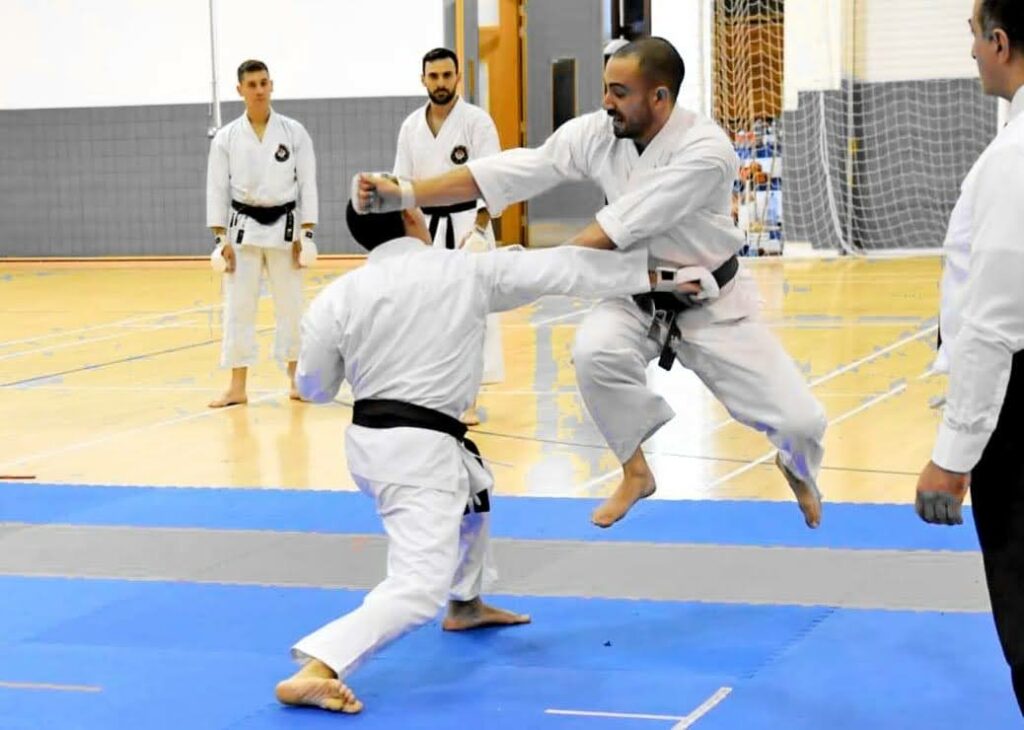
In JKA Karate, competition diverges from traditional sport formats. Unlike other groups, JKA tournaments employ a strict system where points are awarded for one decisive perfect technique, mirroring real-world scenarios.
“Shobu” translates to “match” or “bout,” and “ippon” means “one point.” Every match victory requires obtaining one full point ‘ippon’ or two half points ‘waza-ari’.
The significance of shobu ippon lies in its emphasis on precision, timing, and effectiveness. Participants must execute techniques with skill and control to score a point, as there is only one opportunity to do so. This format promotes strategic thinking, quick reflexes, and the importance of mastering fundamental techniques and applying them with maximum efficiency.
Weight classifications and multiple scoring systems are absent which emphasises the essence of Karate: the ability to dominate opponents regardless of size or weight.
https://youtu.be/BOM78dn8BLI?si=Ce9THSfyRqqXTKi0
This tradition underscores the mastery of self and the ability to overpower adversaries, distinguishing JKA Karate from conventional sport-focused approaches.
BELT SYSTEM
The Japan Karate Association (JKA) employs a traditional belt ranking system to recognize practitioners’ progress and proficiency in Karate techniques and Kata. The system comprises Kyu Grades (Color Belts) and Dan Grades (Black Belts). Kyu grades range from White to Brown, indicating increasing skill levels, while Dan grades include Shodan (1st Dan) and higher, denoting progression and seniority achieved through years of dedicated training and contribution to the art.
Advancement through the belt ranks is achieved through regular and consistent training, demonstration of skill and knowledge, and passing formal examinations conducted by qualified examiners within the JKA organization.
All Individuals are evaluated according to their progress and capabilities.
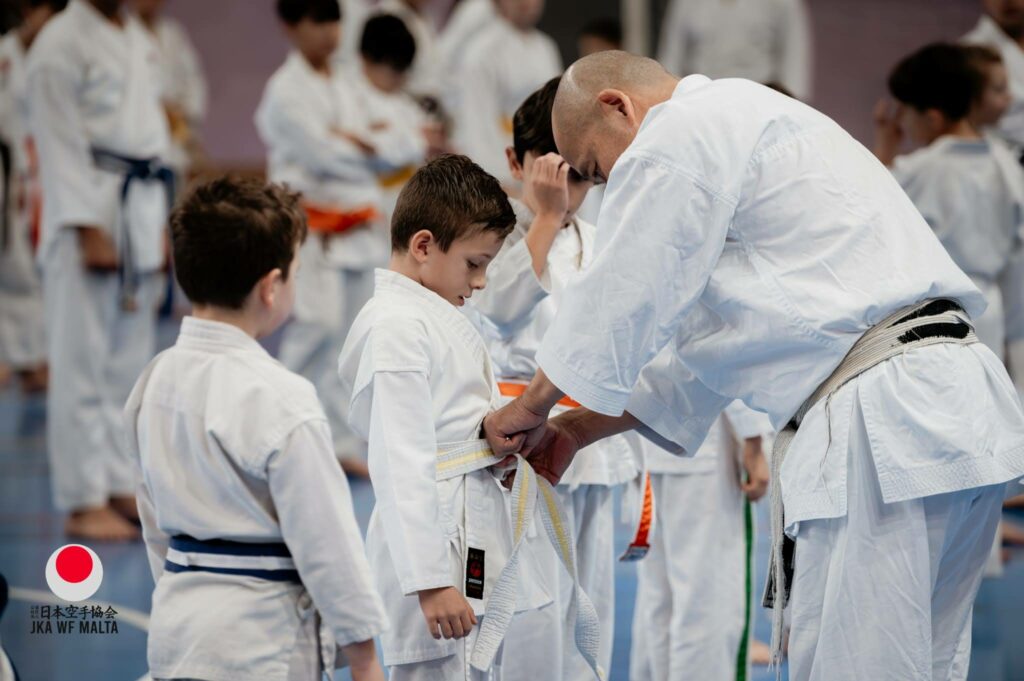
QUALIFICATIONS
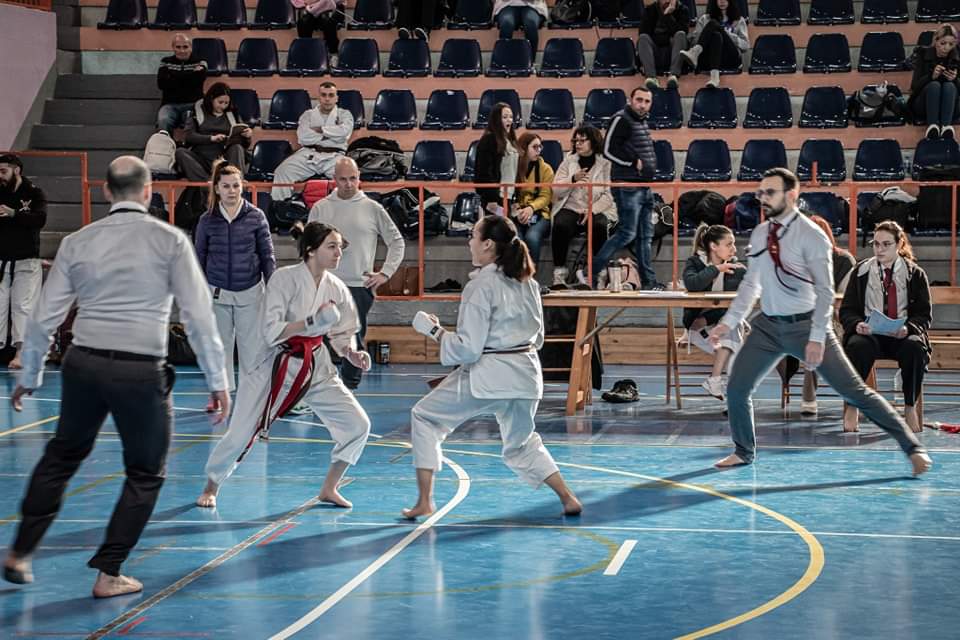
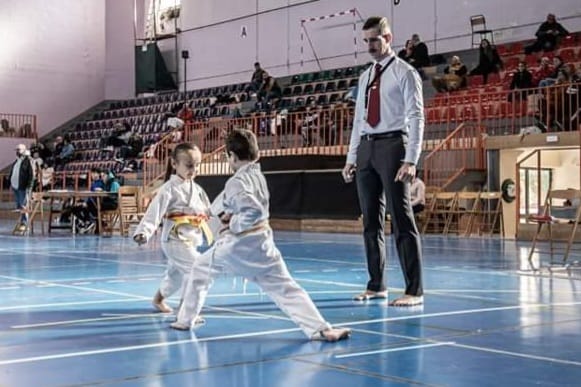
In all JKA WF Member Countries, instructors, examiners, and judges undergo specific training and examinations to obtain licenses ranging from D to A class. Regular updates ensure ongoing proficiency.
The JKA offers three types of qualifications: Instructor, Judge, and Examiner, each with four classes from D to A. https://www.jka.or.jp/en/about-jka/qualification/
Advancement between classes requires fulfilling certification requirements and passing formal testing procedures. Examinations are conducted by authorized Examiners specified by the JKA WF Chief Instructor Ueki Shihan or JKA HQ Technical Committee.
Qualifications are renewed every three years and require a training session for validation.
